Blom Tracheostomy Tube System
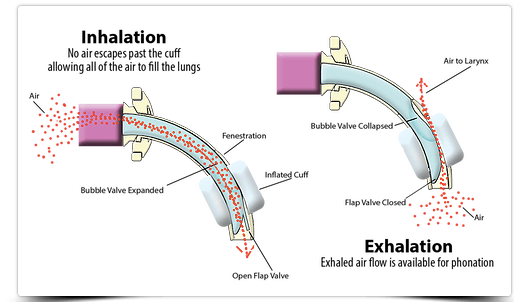
The Blom Tracheostomy Tube System (Pulmodyne) is a specialized tracheostomy tube which can allow adults to vocalize either with the cuff inflated or deflated. This is made possible due to fenestrations on the shaft of the tracheostomy tube and use of the Speech Cannula or LPV. The Blom Tracheostomy Tube System can allow for speech either on or off mechanical ventilation. It is intended to provide tracheal access for airway management of adult patients greater than 30kg.
Fenestrated and Unfenestrated Blom Tracheostomy Tube
There is the Blom cuffed fenestrated tracheostomy tubes for patients on mechanical ventilation and the Blom non-fenestrated uncuffed tracheostomy tube for patients spontaneously breathing.
The Blom Tracheostomy Tube allows speech for patients on or off mechanical ventilation with the cuff inflated or deflated. Speech with an inflated cuff is possible due to the fenestrated tracheostomy tube. Standard fenestrated tracheostomy tube have a higher potential for granuloma formation and occlusion by anterior trachea tissue. The Blom Tracheostomy Tube has uniquely placed fenestrations just above the cuff. Placement of the fenestrations here helps to reduce the risk of posterior wall contact and prevent occlusions by anterior trachea tissues. Fenestrations are smooth on the edges to prevent tissue irritation. Fenestrations are large in diameter to increase airflow and decrease resistance during breathing.
Blom Tracheostomy Tube Sizes

Blom Tracheostomy Product Line
Products are available as Blom Tracheostomy Tube System Kits:
- Fenestrated Cuffed Tube
- Non-fenestrated cuffed tube
- Obturator
- Standard Cannula
- Decannulation plug
- Twill Tie
Individual components can also be purchased:
Standard cannula, subglottic suctioning cannula, speech cannula, LPV, EVR, decannulation plug, SoftTouch Tube holde
Blom Inner Cannula
There are 4 distinct inner cannulas:
- The Standard Inner Cannula
- The Subglottic Suction Cannula
- The Speech Cannula
- The LPV (Low Profile Valve)
The inner cannula is placed with minimal effort. There is a telephone jack clip that is the same for all cannulas to “click” the cannula in place.
Use of the Blom Speech Cannula for Patients on Mechanical Ventilation
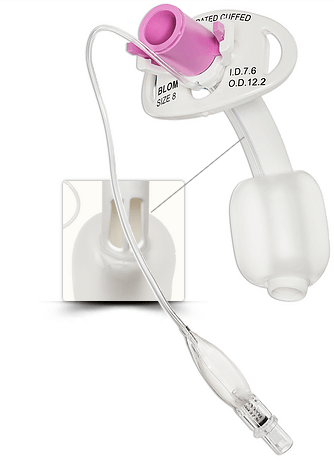
A physician order is required prior to use of the Blom Tracheostomy Speech Cannula. The patient should be medically stable prior to attempts. It is cognitive patients with an intact upper airway to speak.
The Blom Speech Cannula is to be used only with the Blom Fenestrated Cuffed Tracheostomy Tube. It is intended for when the patient is on mechanical ventilation. Cuff deflation is not required with use of the Blom Speech Cannula.

The regular inner cannula is removed and replaced with the Speech Cannula. The Speech Cannula has a bubble valve. During inhalation, air passes through the speech cannula, the bubble valve expands and the flap valve opens and air is delivered to the lungs.. On expiration the flap valve closes and redirects air through the fenestration which then passes through the vocal folds and out the mouth to allow for voicing. The cuff may be left inflated or can be deflated. It is ideal to deflate the cuff if the patient is able to tolerate cuff deflation.
Low volume alarms may go off when using the LPV. This is because there is some leakage of air though the upper airway. The EVR can be used to prevent the occurrence of this low minute volume alarm. It is compatible with most positive pressure ventilators. The EVR is made of small silicone bellows which attaches to a tee piece with a standard 22mm ID connection on one end and a 15/22mm ID on the other end.
The EVR is placed at the end of the expiratory limb of the circuit prior to the exhalation inlet port of the ventilator for machines that measure exhaled volume at the machine. For machines that measure exhaled volumes via a proximal flow sensor- install between the flow sensor and the patient.
Upon placement the low minute volume alarm must be set to the lowest possible active position when using the EVR.
After use of the Speech Cannula, remove the EVR from the circuit and return ventilator alarms to the original settings.
Warning: USE ONLY UNDER QUALIFIED SUPERVISION
If there is any difficulty breathing or distress, remove the Speech Cannula and replace it with the Standard Cannula or the Subglottic Suctioning Cannula.
Use of the Blom Low Profile Valve for Spontaneously Breathing Patients
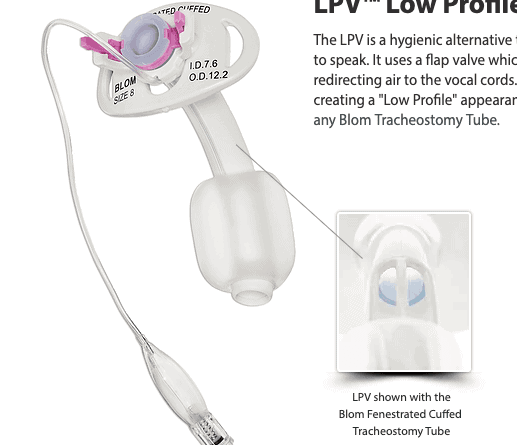
A physician order is required prior to use of the Blom LPV. The LPV can be used for all Blom Tracheostomy Tubes. It is for spontaneously breathing patients (off mechanical ventilation). It should NOT be used for patients on mechanical ventilation.
The cuff of the tracheostomy tube (if present) can be inflated, partially deflated or fully deflated when using the LPV. It is ideal to deflate the cuff if the patient can tolerate cuff deflation.
To place the LPV, simply remove the inner cannula and replace it with the LPV. It’s important to note that the LPV does not have a standard 15mm hub connector and therefore will not attach to the ventilator circuit or manual resuscitator. A Standard or Subglottic Suction Cannula should be available in case the patient requires mechanical ventilation or resuscitation.
Once the LPV is in place, on inhalation, air flows in through the LVP and into the patient’s lungs. If the cuff is inflated with the fenestrated tracheostomy tube, on exhalation, air is redirected through the fenestrations, which passes through the vocal folds to allow for voicing. If the cuff is deflated or a cuffless tracheostomy tube is in place,
Cuff deflation is ideal to allow for increased airflow through the upper airway. This would reduce resistance during exhalation and reduce the work of breathing during spontaneous breathing trials and speaking valve/capping trials.
In clinical experience most patients can manage cuff deflation as long as they are medically stable. Cuff deflation is possible both on and off mechanical ventilation.
What are the similarities and differences between the Blom and a speaking
Both the Blom Tracheostomy Tube System and speaking valves both allow for voicing. Speaking valves require full cuff deflation, or the patient will be unable to breathe. This is because speaking valves are one way valves where air flows in, through the speaking valve and into the trachea, and then exhaled air is redirected through the upper airway. Air does not come back out through the tracheostomy tube. The Blom Tracheostomy Tube may be used when the cuff is inflated. This is particularly useful for patients with difficulty managing cuff deflation, typically when mechanically ventilated.
The Blom Tracheostomy Tube System can be used with a deflated cuff as well. This allows more airflow through the upper airway. Airflow not only occurs through the fenestrations, but also around the tracheostomy tube. It is ideal to deflate the cuff if the patient is able to tolerate cuff deflation.
The Blom is an open valve system. Meaning, there is some amount of air that is able to pass back out through the valve prior to exhalation. The Passy-Muir Valve is the only biased closed position valve. This unique design allows for benefits other than speech.
Both the Blom and the Passy-Muir Valve can be used for patients on and off the ventilator. Shiley, Tracoe, and Shikani speaking valves are unable to be used on mechanical ventilation. See ventilator application of speaking valves.
The speech devices (LPV and Speech Cannula) must be used with the Blom Tracheostomy Tube. Speaking valves can be used with any tracheostomy tube (Shiley, Portex, Tracoe, Blom, ect) as long as it has the universal 15mm hub.
The Blom is for use with adults only, above 30kgs. A speaking valve may be used for neonatal, pediatric or adult populations.
The Blom and Subglottic Suction
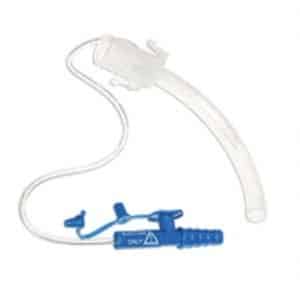
Secretions that pool above the cuff can lead to infection and increase the risk of aspiration and aspiration pneumonia. Ventilator associated pneumonia can occur with people who are on mechanical ventilation through an endotracheal or tracheostomy tube for at least 48 hours. VAP increases hospital mortality rate and length of stay for patients in the ICU.
The Blom Tracheostomy Tube system has the potential for subglottic suctioning. There is a Blom Subglottic Suction Cannula that can replace the standard inner cannula. The Blom Subglottic Suction Cannula has a small suction line on the outer surface of the suction cannula. The suction line terminates at the lower portion of the fenestration, just above the cuff. Secretions often collect above the cuff and are unable to be suctioned with a suction catheter. These secretions can be suctioned through the port. Suctioning secretions above the cuff can be helpful prior to cuff deflation. It can prevent secretions from falling lower into the trachea.
Secretions can be suctioned intermittently at 100-150 mmHg using a suction machine capable of intermittent timed on/off cycles.
The unique design allows for the cannula to be easily removed and flushed if clogged as opposed to removing the entire tracheostomy tube if it is standard subglottic suction. The Blom Subglottic Suction Cannula can also be attached to an air source of 8 to 12 lpm to. Verify upper airway patency prior to using the Speech Cannula.
Periods of Use for the Blom Tracheostomy Tube
The Manufacturer of the Blom Tracheosotmy Tube System has litted the following periods of use:
- Tracheostomy Tube: 30 days
- Speech Cannula and LPV: 60 days
Standard Cannula, Subglottic Cannula and decannulation plg: 24 hours or according to local established protocol
Considerations with the Blom Tracheostomy Tube:
The Blom is not typically the initial tracheostomy tube that is initially inserted. The LPV and Speech cannula require the Blom Tracheostomy Tube and cannot be used with other tracheostomy tubes. The entire tracheostomy tube requires changing to the Blom in order to use the Speech Cannula and LPV. Therefore, costs may be a factor in use of the Blom Tracheostomy Tube System.
However, for patients who are not able to manage cuff deflation, this may be best option for patients to achieve voicing. Patients who may have difficulty with cuff deflation are those with difficulty managing secretions such as patients with bulbar dysfunction including ALS.
Summary
There are a few verbal communication options for allowing natural voicing for patients with tracheostomy. An individualized approach is recommended. For patients with difficulty managing cuff deflation, the Blom Tracheostomy Tube System may be a good choice.


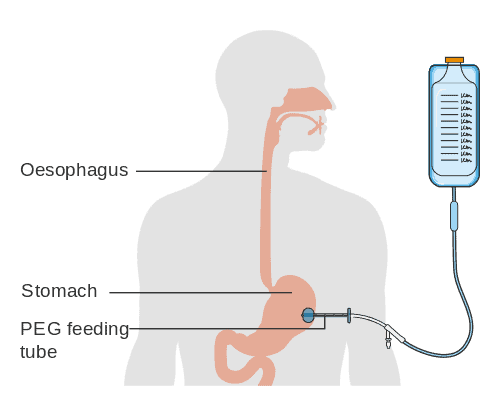

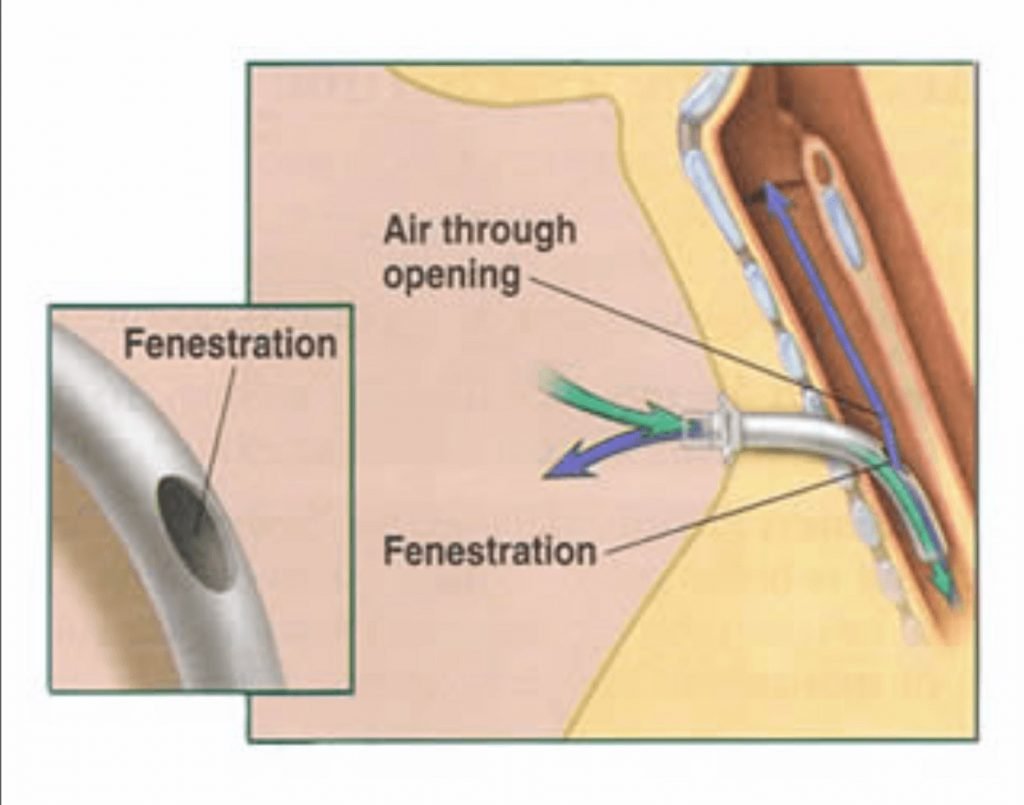
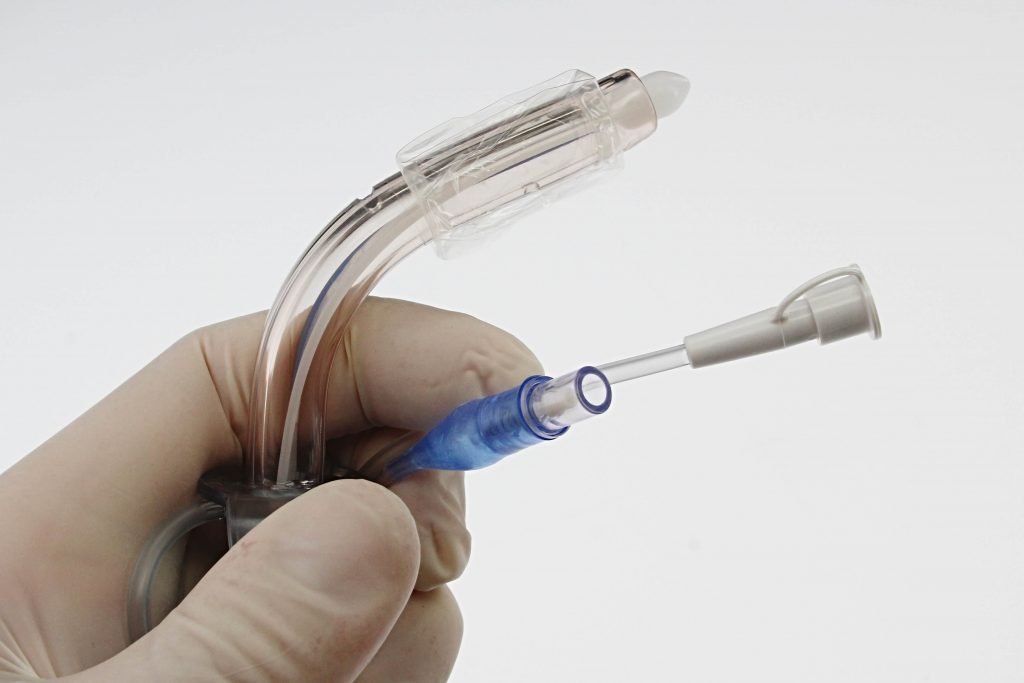

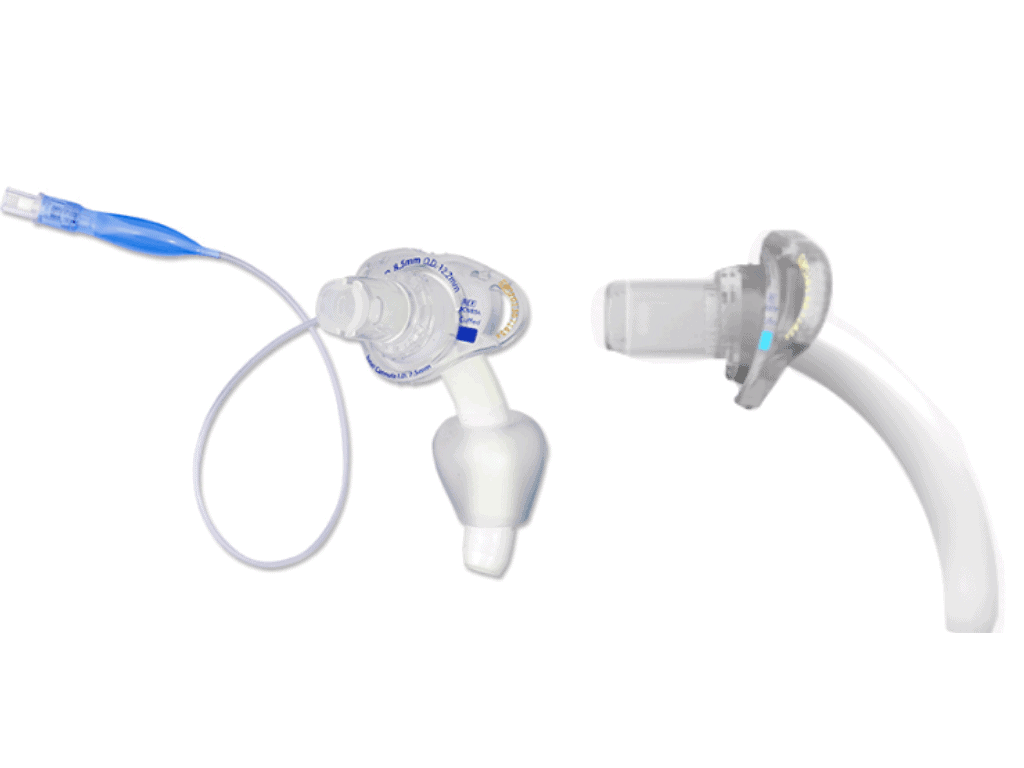


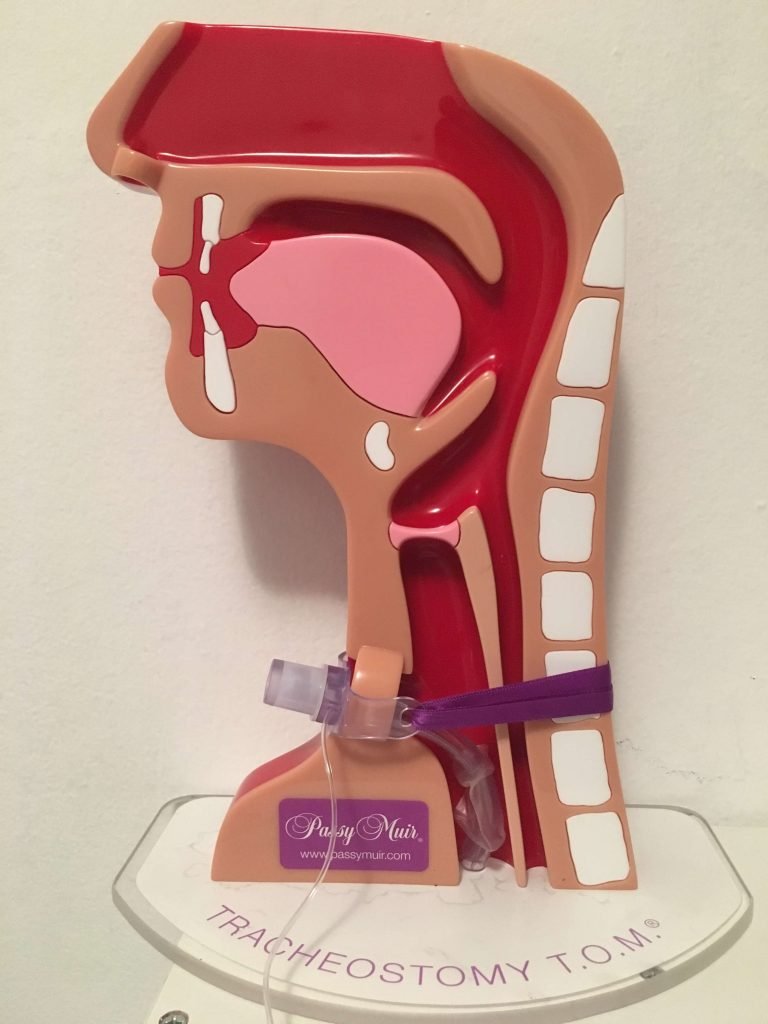

Responses